| Umělec magazine 2007/4 >> Erste Bank | List of all editions. | ||||||||||||
|
|||||||||||||
Erste BankUmělec magazine 2007/401.04.2007 Clemens Foscher | banking and finance | en cs de es |
|||||||||||||
|
Over the last few years Austrian companies have made substantial profits from taking over firms in the new EU member states. The Erste Bank Gruppe [First Bank Group], which has bought up formerly state-owned banks in seven countries, provides an example of this successful “Eastern expansion.” The work of the Erste Bank Foundation in Central and Eastern Europe is characterized by sponsorship activities in the fields of art, culture, sports as well as social and European integration. It is, however, not only driven by the altruism of large-hearted bankers but also by the aspiration to establish an advantageous image that is different from the mainstream. As the head of tranzit Bratislava explains, the bank also gains from the cooperation with artists because it receives important information about emerging markets at little cost.
Boris Ondreička has just returned from documenta12 where he participated in the performance “Three Intellectuals from Central Europe stage a play about a lecture with bare chests.” His other projects, comprised of drawings, installations and performances, have been exhibited at important shows throughout Europe including the Kunstverein Frankfurt, the Secession in Vienna, the Biennale in Venice and the Volkspalast Berlin. Boris Ondreička is also in charge of tranzit space Bratislava, which, since its opening in 2005, has become a prime address for the production of contemporary art and culture in Slovakia. Tranzit and the Promotion of Contemporary Art in Slovakia tranzit refers to an initiative dedicated to the promotion of contemporary art in Central and Eastern Europe. It was founded in 2001 as a response to the repercussions of the growing internationalization of production, consumer and financial markets, enterprises, communication systems and culture industries. What reads like the manifesto of an anti-globalization movement is, in reality, a sponsorship program launched by the Erste Bank Gruppe. The question remains, however, of whether or not these so-called corporate social responsibility programs are merely token measures aimed at the pacification of critical clients? Or does this sponsorship reflect a responsible company policy that views corporate citizenship as part of the process of opening up new markets? The Bank and Contemporary Art According to Andreas Treichl, the chief executive of the Erste Bank Gruppe, ethics is the basis of economic success. The evidence for this proclamation rests in the bank’s first place ranking in the Corporate Social Responsibility (CSR) Awards among 100 of Austria’s biggest corporations. The bank takes a multi-faceted approach to their CSR measures. One of their most high-profile endeavors is the Erste Bank Foundation, established in 2005, which focuses on cultural, social and European questions. The corporation has built a reputation on the success of their projects. For example the development of a bank for people who would not otherwise be financially able to open accounts, along with the promotion of relationships and exchanges aimed at strengthening European values. Another one of their projects is the sponsorship of artistic and cultural projects, which is where tranzit enters into the equation. Bank representative Christine Böhler describes the proceedings in the development of tranzit in the following way: “We wanted to use the existing know-how and potential, and therefore we decided to support someone with initiative, or an incorporated society that wanted to bring about change in a region.” Thus, in the Czech and Slovak Republics, in Hungary and Austria, self-governing institutions emerged. These institutions are financed by various local banks and are directed by independent curators or associations. Complete autonomy within the institution allows the programs to concentrate on the sphere of contemporary art. Christine Böhler considers tranzit to be “an attempt to support contemporary art as a socially critical factor.” She says that this view is based on the following conviction: “strong and differentiated societies are more capable of being democratic; they are better equipped to accommodate diversity and are thus more developable.” Classical ways of promoting culture such as the endorsement of major institutions (opera houses, museums etc) are not part of the contact strategy. It was decided, instead, to focus on cumbersome, non-established areas, where a certain gap still had to be filled. “But that leads us to a problem of perception, she continues. The trouble is that all the small sponsored projects are much harder to see and associate with anything. Still, given the low level of state sponsorship for contemporary art in these countries, the hope remains that the bank’s activities give an important impulse.” Everyone Gets Something Out of It : Art Sponsorship as Image Transfer If you compare the Erste Bank’s commitment to the promotion of contemporary art in Central and Eastern Europe with the activities of other corporations, the bank stands out for its continuity and its sponsorship of projects that are not of immediate use to the bank. The usual promotion activities, which, of course, are also carried out by the bank, rely on events that attract the crowds, popular names or architectural highlights. By contrast, some of the programs of the Erste Bank Foundation place emphasis on the attempt to fill a cultural and social wasteland or to back unpleasant positions. On the other hand, it would be naïve to believe that this approach was due to altruism. The strategy of the bank has more to do with its interest in creating an image that is different from the mainstream. Against the background of profits of over 900 million euros generated by its foreign subsidiaries alone, this luxury seems affordable. Boris Ondreička gives a fuller picture of the bank’s reasons for taking interest in local art projects in the following interview in which he talks about his experiences in cooperating with Erste Bank. The head of tranzit Bratislava regards enterprizes, in contrast to public institutions, as calculable and reliable cooperation partners – an attitude which can be traced back to his position as counsellor in the Slovak Ministry of Culture in the 1990s. C.F.:How did your cooperation with the Erste Bank come about? How did tranzit Bratislava develop? B.O.:In 2002, there was a change in the management of the bank’s sponsorship department, and they were on the lookout for partners in Central and Eastern Europe. We got in contact with the Erste Bank on the initiative of Kathrin Rhomberg and Maria Hlavajova. We started off without any physical infrastructure. We were basically a group of artists and intellectuals who had a certain project budget at their disposal. We organised readings and discussions, did research on the contemporary art scene and gave grants to artists. Because of the bad infrastructure for contemporary art in Bratislava – there is no exhibition hall or a developed scene of local galleries – we came to the conclusion that we needed our own premises for our activities. Now we have got around 1000m2 of work and exhibition space, including studios for 30 artists. Part of the area is used for free by 13 m3, a group that works in media politics. C.F.:What are the key aspects of tranzit Bratislava’s program? B.O.:Our program focuses on contemporary art, as well as an interest in its development in Slovakia. We offer studio space and try to integrate artists into a community and to position them in the international art scene, for example Julius Koller and Maria Bartisova. We host symposia on relevant themes and organize exhibitions or events like a festival for experimental, electronic music. C.F.:What is the budget that tranzit Bratislava receives from the Erste Bank? Are there any guidelines that your sponsors pass on to you or, in other words, how independently can you make decisions about how you want to spend the money? B.O.:Officially our financial backer is Slovenska Sporitelna, the Slovak subsidiary of the Erste Bank Gruppe. When we need to talk about bigger projects and strategic decisions, however, we turn directly to the headquarters in Vienna. The annual support amounts to 120,000 Sk, which covers all our expenses for rent, organization, administration etc. We present our program once a year in a meeting of the managing board which consists of six artists/curators and three bank representatives. So far the managing board has given its blessing to all projects without any objections. They are very satisfied with our activities, so de facto we are free to do what we like. As we don’t advance any extreme political views, there is hardly any friction with the investors. C.F.:How would you rate your cooperation with the Erste Bank in comparison with other sponsors? B.O.:In my previous experiences the sponsors were always guided by the usual marketing concerns. So it was basically all about marketability, the size of the logo, media profiles and so on. In the case of the Erste Bank there is agreement that our function is to produce regional art and knowledge. That way we also supply the bank with a certain image, even if we don’t get much feedback in Slovakia because we are not well-known. Apart from that, you can hardly impress the clients of the Erste Bank with names like Bruno Latour or Heimo Zobernig. C.F.:How would you explain the bank’s interest in cooperating with your institution? It’s unlikely that it is purely charitable motivation, isn’t it? B.O.:We provide them with knowledge and information that is simply not available on the market. We are a think-tank for a special type of knowledge that can be a valuable contribution to the bank. Of course, they could also hire ten people who would gather that sort of knowledge for them. But that would be considerably more expensive. Kontakt – The Erste Bank Art Collection The Erste Bank’s tranzit collection concentrates primarily on contemporary art from Central and Eastern Europe. This collection, built up by four curators, is, by its own account, designed “to reflect the political and historical transformation in Europe and the value of art against the background of specific cultural, social and economic developments in post-socialist countries.” The collectors, however, are involved with far more than the purchasing of artworks from the region. In addition to expanding the collection, the curators are concerned with building and maintaining contacts within the contemporary art world so as to offer a flexible working platform for the collection’s projects. The works of the collection are presented in curated exhibitions that travel to various locations. Among the artists represented are Abramović, Bodzianowski, Dertnig, Dabernig, Lehocká, Gotovac and Grigorescu. To Edelbert Köb, head of the Museum of Modern Art (MUMOK) in Vienna where the collection was presented in 2006, the works convey “crucial new insights about the relationship between art and social reality.” Austrian Enterprises in Eastern Europe The criteria for accession to the EU created market opportunities in Central and Eastern Europe. As a neutral country, Austria had established good contacts in the former Soviet bloc before 1989. These could then be used by many Austrian enterprises after the opening up of the region. In a country ranking based on the cumula- tive investment in the ten new EU member states, Austria comes first in the voting in Bulgaria and Slovenia, second in Romania and Slovakia and third in the Czech Republic and Hungary. By the end of 2005, the investments had reached over 25 billion Euros, and this year the profits amounted to 4.2 billion Euros. The Controversial Consequences of Foreign Investment As far as the consequences of foreign investment in the target countries are concerned, opinions differ considerably. The OECD and the World Trade Organization see the foreign investment activity in a very positive light and stress the following advantages: an acceleration of structural and technological change, closer integration in international trade, production growth, enterprise development and thus enhanced competition. Yet this view is controversial. According to Professor Mencinger at the University of Ljubljana, there is no positive correlation between foreign direct investment and economic growth in the target countries. Joachim Becker of the Economic University in Vienna also concedes that most analyses simply neglect the negative effects on the trade balance and local industries. Becker describes the expansion of Austrian banks in Central and Eastern Europe in the following manner: at the beginning of the 1990s, state loans were distributed to local enterprises in order to promote the emergence of capitalism and a new middle class in the post-socialist countries. With hindsight it is clear that part of these credits have not been lucrative. In the early 1990s most banks therefore functioned as economic promotion agencies rather than as commercial banks. These banks were only privatized in the course of the EU accession talks after the state had first reorganized them financially and rid them of their “bad debts.” The Austrian investors therefore mainly took over healthy banks and then profited from the increasing demand for banking services. The turnovers in the banking sector, which have been growing since the year 2000, are now yielding high profits to the Austrian parent companies. It is a problem, Becker explains, that in those sectors in which Austrian enterprises are strongly represented (banking, trade and construction) foreign direct investment does not provide the target countries with any foreign exchange proceeds because this investment is not export-oriented. Yet at the same time it entails foreign exchange expenses, as rising profits are transferred to the home country. In the industrial sector, by contrast, where according to Becker positive effects are possible in the form of technological transfers, few investments by Austrian companies can be found. In total, direct investment in the banking sector has proven to be a lucrative enterprise for Austrian investors, whereas the target countries see hardly any positive effects. The Erste Bank in Eastern EuropeThanks to a whole series of company takeovers in Central and Eastern Europe, since Austria’s accession to the EU in 1995, the Erste Bank has managed to become one of the most significant credit institutions in the region. By the end of 2006, it had almost 16 million clients (compared with 600,000 in 1997), more than 2,700 branches, a stock exchange value of about 18 billion Euros and operating profits of over 2 billion Euros. Its subsidiaries in Central and Eastern Europe contributed nearly 1 billion Euros to these profits, i.e. approximately 50%.
01.04.2007
Recommended articles
|
|||||||||||||
|
04.02.2020 10:17
Letošní 50. ročník Art Basel přilákal celkem 93 000 návštěvníků a sběratelů z 80 zemí světa. 290 prémiových galerií představilo umělecká díla od počátku 20. století až po současnost. Hlavní sektor přehlídky, tradičně v prvním patře výstavního prostoru, představil 232 předních galerií z celého světa nabízející umění nejvyšší kvality. Veletrh ukázal vzestupný trend prodeje prostřednictvím galerií jak soukromým sbírkám, tak i institucím. Kromě hlavního veletrhu stály za návštěvu i ty přidružené: Volta, Liste a Photo Basel, k tomu doprovodné programy a výstavy v místních institucích, které kvalitou daleko přesahují hranice města tj. Kunsthalle Basel, Kunstmuseum, Tinguely muzeum nebo Fondation Beyeler.
|















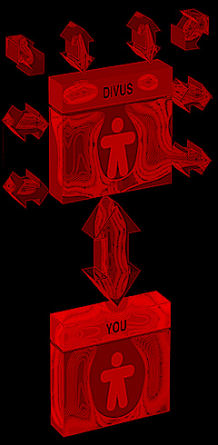






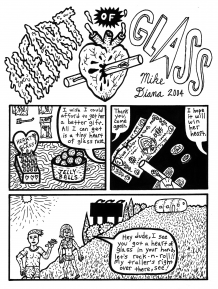





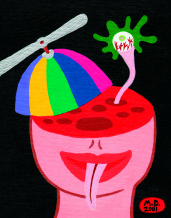
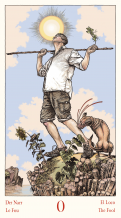
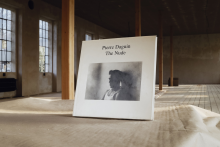


 We Are Rising National Gallery For You! Go to Kyjov by Krásná Lípa no.37.
We Are Rising National Gallery For You! Go to Kyjov by Krásná Lípa no.37.
Comments
There are currently no comments.Add new comment